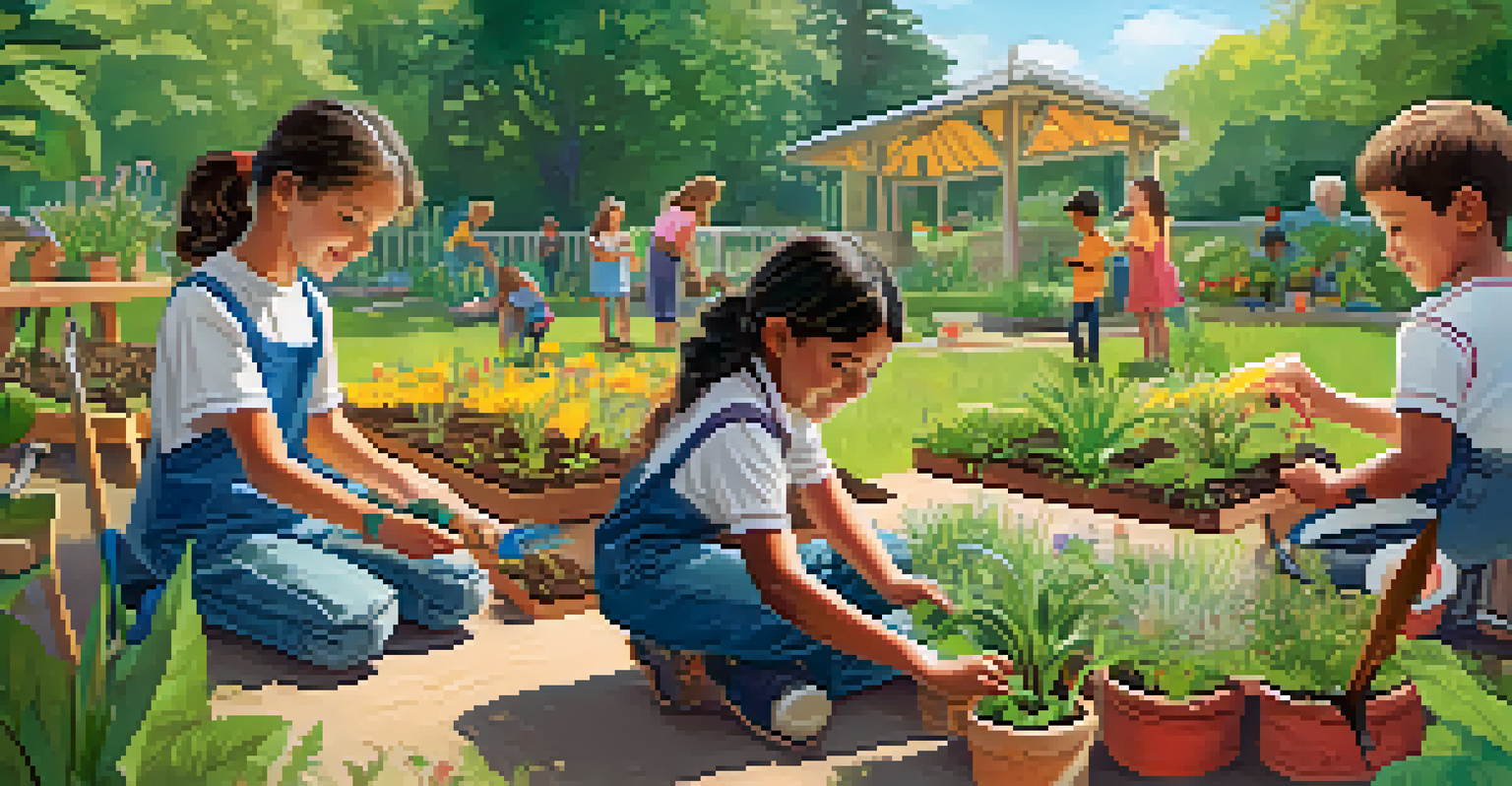The Importance of Native Plants in Botanical Garden Collections

Understanding Native Plants and Their Role
Native plants are species that naturally occur in a specific region without human intervention. They have adapted to local conditions over thousands of years, making them integral to their ecosystems. In botanical gardens, showcasing native plants helps educate visitors about biodiversity and the importance of local flora.
The greatest threat to our planet is the belief that someone else will save it.
These plants are not only beautiful but also serve critical ecological functions. They provide food and habitat for wildlife, including bees, birds, and butterflies, which play essential roles in pollination and maintaining healthy ecosystems. By including native plants in collections, botanical gardens contribute to conservation efforts.
Moreover, native plants often require less water and maintenance than non-native varieties, making them more sustainable choices for gardeners. By highlighting these species, botanical gardens encourage sustainable gardening practices that benefit both the environment and local communities.
Enhancing Biodiversity Through Native Collections
Biodiversity refers to the variety of life on Earth, and native plants are key players in maintaining this diversity. They form the backbone of local ecosystems, supporting a web of life that includes insects, mammals, and other plants. By prioritizing native species in their collections, botanical gardens help preserve this intricate balance.

For example, planting native wildflowers can create habitats that attract native pollinators, which are crucial for the reproduction of many plants. This not only supports the local food web but also enhances the overall health of the ecosystem. Botanical gardens that emphasize biodiversity through native plants become vital resources for education and conservation.
Importance of Native Plants
Native plants are crucial for local ecosystems, providing food and habitat for wildlife while requiring less maintenance than non-native varieties.
Additionally, these gardens can serve as living laboratories for researchers studying plant interactions within ecosystems. By observing how native plants thrive in their natural habitats, scientists can gain insights into the best practices for conservation and restoration efforts.
Cultural Significance of Native Plants
Native plants hold cultural significance for many communities, often tied to local traditions, uses, and histories. Many indigenous cultures have long relied on these plants for food, medicine, and crafts. By including native species in botanical gardens, we honor and preserve these important cultural connections.
In every walk with nature, one receives far more than he seeks.
Botanical gardens can serve as platforms for educating the public about the traditional uses of native plants. Workshops and demonstrations on how to use these plants in cooking or herbal medicine can foster a deeper appreciation for local flora. This not only enriches visitors' experiences but also highlights the importance of preserving these plants for future generations.
Moreover, native plants in gardens can help rekindle interest in traditional ecological knowledge. By showcasing how these plants fit into the broader cultural landscape, botanical gardens can promote respect for indigenous practices and encourage sustainable relationships with nature.
Native Plants and Climate Resilience
As climate change increasingly impacts our environment, native plants offer solutions for resilience. These species are often better equipped to withstand local climate conditions, including droughts and floods. By incorporating them into botanical gardens, we can model climate-resilient landscaping practices.
For instance, native plants typically have deep root systems that help stabilize soil and prevent erosion, while also requiring less irrigation than non-native species. This makes them ideal candidates for sustainable landscaping in both public and private spaces. Botanical gardens can demonstrate how native plants can adapt to changing climates, inspiring visitors to make similar choices in their own gardens.
Native Plants Boost Biodiversity
By prioritizing native species, botanical gardens enhance biodiversity, supporting diverse life forms and promoting ecological balance.
Furthermore, by supporting local ecosystems, native plants contribute to overall climate resilience. Healthy ecosystems can absorb more carbon and mitigate the effects of climate change, illustrating the interconnectedness of plant health and climate stability.
Educational Opportunities with Native Plants
Botanical gardens serve as vital educational resources, and native plant collections play a crucial role in this mission. They provide opportunities for children and adults alike to learn about local ecosystems and the importance of biodiversity. Through guided tours and interactive exhibits, gardens can foster a deeper understanding of native flora.
Schools often partner with botanical gardens for educational programs focused on plant biology, ecology, and conservation. These hands-on experiences can inspire the next generation of environmental stewards, encouraging them to appreciate and protect their local natural heritage. Engaging activities such as planting, harvesting, and crafting with native plants can leave lasting impressions on young minds.
Moreover, incorporating native plant education into community programs can foster a sense of ownership and responsibility toward local environments. When people learn about the ecological roles of native plants, they are more likely to advocate for their conservation and support sustainable practices in their own lives.
Tourism and Economic Benefits of Native Plants
Botanical gardens featuring native plant collections can attract tourists, boosting local economies. Visitors are often drawn to the unique beauty and ecological significance of native species, creating opportunities for guided tours, workshops, and events that celebrate local flora. This influx of visitors can support local businesses and promote community engagement.
Additionally, by showcasing native plants, botanical gardens can position themselves as leaders in conservation and sustainability efforts. This reputation can attract funding and partnerships with environmental organizations, further enhancing their economic viability. As more people recognize the value of native plants, they are likely to support initiatives that promote their preservation.
Economic Benefits of Native Flora
Showcasing native plants attracts tourism and supports local economies, intertwining ecological conservation with community growth.
Ultimately, investing in native plant collections not only benefits the environment but also contributes to economic growth. By intertwining ecological and economic interests, botanical gardens can create sustainable models that serve both the community and the planet.
Conservation Efforts and the Future of Native Plants
The conservation of native plants is vital for maintaining biodiversity and ecosystem health. Botanical gardens play a key role in these efforts by collecting, preserving, and propagating native species. This ensures that genetic diversity is maintained, which is crucial for the resilience of plant populations.
Many botanical gardens also participate in restoration projects, helping to rehabilitate degraded habitats and reintroduce native species into the wild. This active involvement in conservation not only supports local ecosystems but also demonstrates the gardens' commitment to environmental stewardship. Educational programs can further raise awareness about the importance of conserving native plants.

Looking ahead, the future of native plants in botanical gardens appears promising. As awareness of environmental issues grows, more gardens are prioritizing native species in their collections. This shift reflects a broader commitment to sustainability and conservation, ultimately benefiting both local ecosystems and the communities that rely on them.